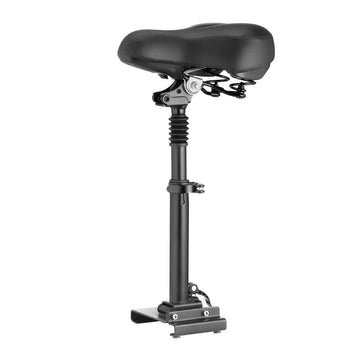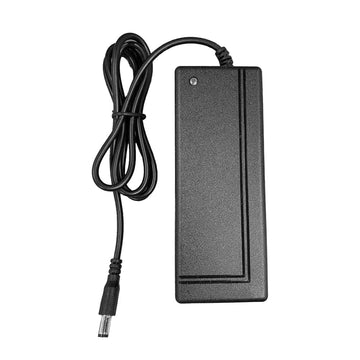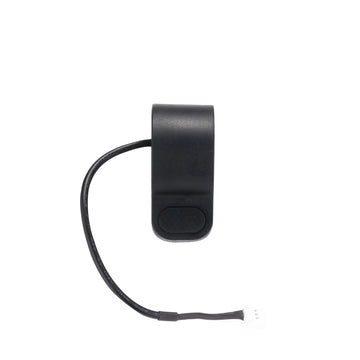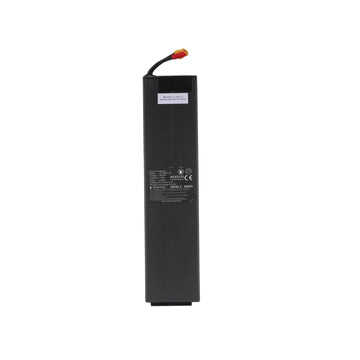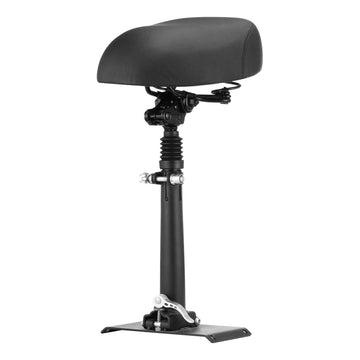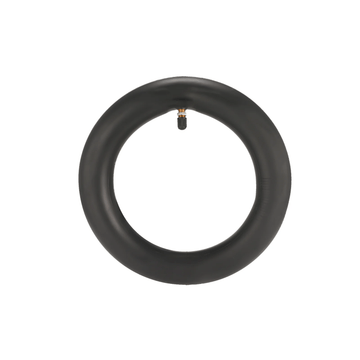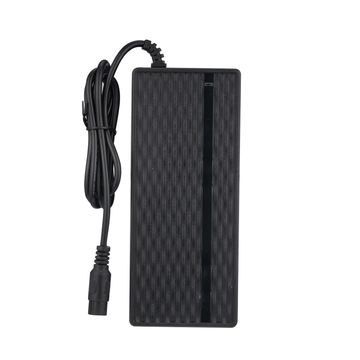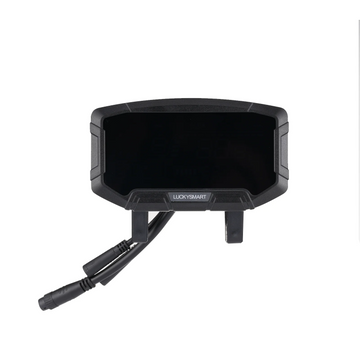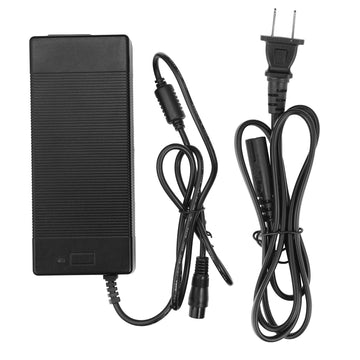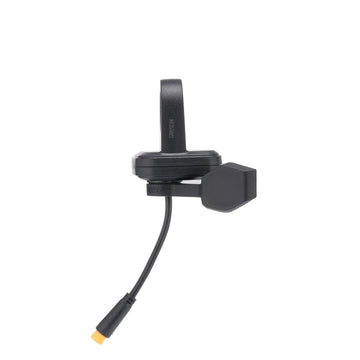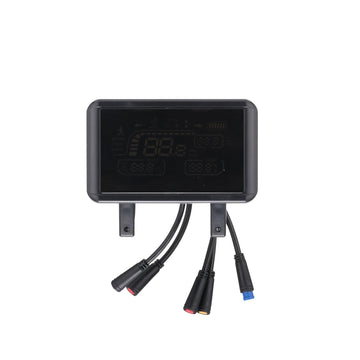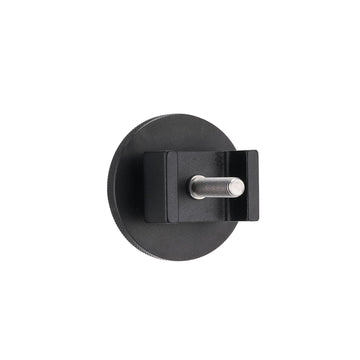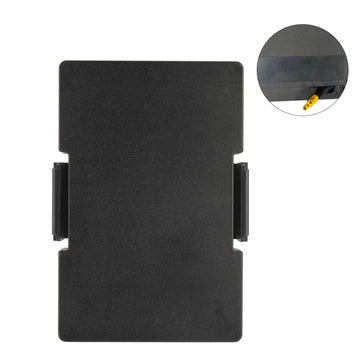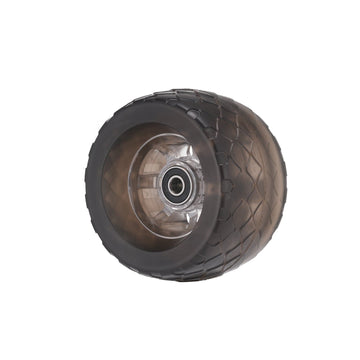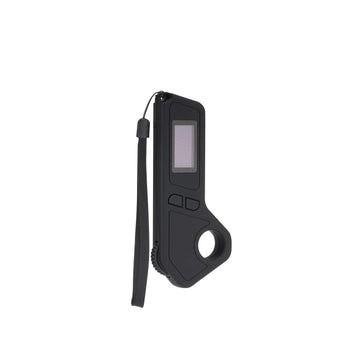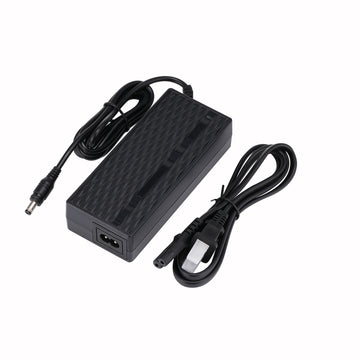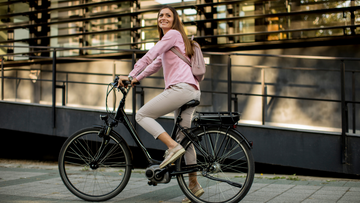Do You Have to Pedal an Electric Bike? E-Bike Mechanics Explained
by Zachary Franklin on Jun 03, 2024

E-bike tech comes in different flavors, each with its own take on rider effort. But do you have to pedal an electric bike?
From full throttle joyrides to pedal-assist sprints, your e-bike experience can be as laid-back or as active as you choose. Let's get to the core of how these clever machines work and figure out if you need to pedal an e-bike.
What Are Electric Bikes?

Electric bikes, or e-bikes, are bicycles that are equipped with an electric motor and battery to assist with pedaling. They are becoming increasingly popular as a mode of transportation due to their ease of use, efficiency, and eco-friendliness. In this section, you will learn about the components and design of e-bikes, as well as the types of e-bikes available on the market.
Components and Design
E-bikes have several key components that work together to provide a smooth and efficient ride. These components include the motor, battery, frame, handlebar, sensor, and throttle.
- Motor: The motor is the heart of the e-bike and provides the power to assist with pedaling. It is usually located in the rear hub or the bottom bracket of the bike.
- Battery: The battery provides the power to the motor and is usually located on the frame of the bike. It can be easily removed for charging.
- Frame: The frame of an e-bike is similar to that of a traditional bicycle, but it is designed to accommodate the motor and battery. It is usually made of aluminum or carbon fiber.
- Handlebar: The handlebar of an e-bike is similar to that of a traditional bicycle, but it may include additional controls for the motor and battery.
- Sensor: The sensor is located on the pedal and detects when the rider is pedaling. It sends a signal to the motor to provide assistance.
- Throttle: The throttle is a control that allows the rider to activate the motor without pedaling. Throttles are not legal in all areas and are usually limited to a top speed of 20 mph.
Types of E-Bikes
There are three main types of e-bikes: Class 1, Class 2, and Class 3. Each class has different requirements and restrictions.
- Class 1: Class 1 e-bikes are pedal-assist only and have a maximum assisted speed of 20 mph. They are allowed on bike paths and trails.
- Class 2: Class 2 e-bikes have a throttle that can be used to activate the motor without pedaling. They also have a maximum assisted speed of 20 mph and are allowed on bike paths and trails.
- Class 3: Class 3 e-bikes are pedal-assist only and have a maximum assisted speed of 28 mph. They are not allowed on bike paths and trails and are considered to be more like mopeds.
How Electric Bikes Work

Electric bikes, also known as e-bikes, are bicycles that come with an electric motor and battery that assist the rider in pedaling. They have become increasingly popular in recent years due to their convenience, efficiency, and eco-friendliness. In this section, we will explore how electric bikes work and the two main types of control mechanisms: pedal-assist and throttle-based control.
Pedal-Assist Mechanism
Pedal-assist is the most common mechanism used in electric bikes. It works by providing assistance to the rider's pedaling motion, making it easier to ride uphill or cover longer distances. The motor is activated by a cadence sensor or torque sensor that detects the rider's pedaling motion and provides assistance accordingly.
Cadence sensors are the most basic type of sensor and measure the speed at which the pedals are turning. They provide a fixed level of assistance, regardless of the rider's effort. On the other hand, torque sensors measure the force applied to the pedals and provide assistance proportionally to the rider's effort.
The motor in a pedal-assist e-bike is usually mounted on the bottom bracket or the rear hub. Meanwhile, the battery is usually mounted on the downtube or the rear rack. The battery capacity and range vary depending on the e-bike model and can range from 20 miles to over 100 miles per charge.
Throttle-Based Control
Throttle-based control is another type of mechanism used in electric bikes. It works by providing assistance to the rider without the need for pedaling. The motor is activated by a throttle that is usually located on the handlebar. The rider can adjust the level of assistance provided by the motor by twisting the throttle.
Throttle-based e-bikes are usually limited to a maximum speed of 20 mph in the United States and 25 km/h in Europe. They are also not allowed on some bike paths and trails.
Also read: How Do Electric Bikes Work?
Riding an Electric Bike

Starting and Handling
Starting an electric bike is relatively easy. First, make sure the battery is charged and securely attached to the bike. Turn on the bike by pressing the power button. Some e-bikes have a display screen that shows your speed, battery life, and other information.
You may need to adjust the pedal assist level, which determines how much assistance the motor provides when you pedal. Once you're ready, start pedaling and the motor should kick in.
Handling an electric bike is similar to handling a regular bicycle, but there are a few differences to keep in mind.
E-bikes are typically heavier than traditional bikes, so it may take some getting used to when turning or stopping. Make sure to use both brakes evenly to avoid skidding or losing control. When stopping, make sure to shift your weight back to avoid tipping forward.
Navigating Different Terrains
Electric bikes are versatile and can handle a variety of terrains, but it's important to know how to navigate different types of roads and hills. When riding on flat terrain, you can use a lower pedal assist level to conserve battery life and get some exercise.
When riding on hills or inclines, you can increase the pedal assist level to make it easier to climb. However, keep in mind that using a higher pedal assist level can drain the battery faster.
When navigating different terrains, it's also important to consider the weight of the bike. Some e-bikes are heavier than others, which can make it more difficult to handle on steep inclines or rough terrain. Make sure to choose an e-bike that is appropriate for the type of riding you plan to do. Additionally, always wear a helmet and follow traffic laws to ensure a safe and enjoyable ride.
Safety and Regulations

Helmet and Gear
When riding an electric bike, it is important to prioritize safety by wearing appropriate gear. This includes a helmet that fits properly and any other protective gear that may be necessary for your specific riding conditions. In the United States, helmet laws vary by state, but it is always a good idea to wear one regardless of the law.
Traffic Laws and Rules
As a cyclist, you are required to follow the same traffic laws and rules as other vehicles on the road. This includes obeying traffic signals, using hand signals when turning, and riding in the same direction as traffic. In addition, electric bikes are subject to specific regulations depending on their classification.
In the United States, electric bikes are classified into three categories: Class 1, Class 2, and Class 3.
Class 1 e-bikes have a maximum speed of 20 mph and are equipped with a motor that only provides assistance when the rider is pedaling. Class 2 e-bikes also have a maximum speed of 20 mph but are equipped with a throttle that can be used to activate the motor without pedaling. Class 3 e-bikes have a maximum speed of 28 mph and are only allowed on roads.
It is important to note that regulations for electric bikes can vary by state, so it is always a good idea to check the specific laws in your area. Additionally, it is important to be aware of your surroundings and ride defensively to ensure your safety on the road.
Selecting the Right Electric Bike
When it comes to selecting the right electric bike, there are a few factors you need to consider to ensure you get the best bike that suits your needs. Here are some things to keep in mind:
Considering Your Needs
The first step in selecting the right electric bike is to think about your personal preferences and intended use. Do you want a bike for commuting, leisure, or off-road adventures? Do you prefer a certain type of design, such as a step-through or a mountain bike? Knowing what you want will help you narrow down your options and choose the right bike.
Evaluating Performance and Cost
Performance and cost are also important factors to consider. Electric bikes come in different designs and with different features, which can affect their performance and cost. For instance, some bikes have a longer range than others, while some have more powerful motors that can handle steeper hills. Keep in mind that the more features a bike has, the higher the cost is likely to be.
To help you evaluate performance and cost, consider making a table or a list of the bikes you're interested in and comparing their features side-by-side. Look for bikes that offer the features you need at a price you can afford.
In addition to performance and cost, it's also important to consider the fun factor. After all, riding an electric bike should be an enjoyable experience. Look for a bike that not only meets your needs but also makes you excited to ride.
Wrap Up: Do You Have to Pedal an Electric Bike?
Whether you're in it for an intense workout or a leisurely commute, e-bikes cater to every rider's needs with customizable pedal assistance. Take control of your ride with the versatility that only an e-bike can offer, blending human effort with electric propulsion as you see fit.
Charge ahead into a world where your ride is exactly what you make of it—pedal to your heart's content or let the motor take the strain.
Interested in the freedom and flexibility of e-biking? Browse our collection of electric bikes at iSinwheel and find the one that aligns with your personal riding style. The road is calling—how much or how little you pedal is entirely up to you. Embrace the journey with the ideal e-bike as your trusted companion.
Frequently Asked Questions
How often do you have to pedal an electric bike?
Electric bikes, or e-bikes, have two types: pedal-assist and throttle. Pedal-assist requires pedaling to activate the motor, while throttle e-bikes don't require pedaling.
How often you have to pedal an electric bike depends on the type of e-bike you have.
If you have a pedal-assist e-bike, you will need to pedal to activate the motor. The motor will provide assistance as long as you continue to pedal. If you stop pedaling, the motor will stop providing assistance.
Throttle e-bikes, on the other hand, don't require pedaling, but you can still pedal if you want to.
Can an eBike work without pedaling?
Yes, some e-bikes are designed to work without pedaling. These e-bikes are equipped with a throttle that allows you to control the motor without pedaling.
However, it's important to note that in some countries, throttle-controlled e-bikes are subject to different regulations than pedal-assist e-bikes. For example, in Australia, throttle-controlled e-bikes must be limited to 25kph.
Can you ride an ebike with the power off?
Yes, you can ride an e-bike with the power off, just like a regular bike. However, e-bikes are typically heavier than regular bikes because of the added weight of the motor and battery. This means that riding an e-bike without the motor's assistance can be more difficult than riding a regular bike.
Are electric bikes difficult to pedal?
Electric bikes are not necessarily more difficult to pedal than regular bikes. In fact, some e-bikes are designed to make pedaling easier by providing assistance from the motor. However, e-bikes are typically heavier than regular bikes, which can make them more difficult to pedal without the motor's assistance.
Are all electric bikes pedal-assisted?
No, not all e-bikes are pedal-assisted. Some e-bikes are equipped with a throttle that allows you to control the motor without pedaling. However, in some countries, throttle-controlled e-bikes are subject to different regulations than pedal-assist e-bikes.
Do electric bikes do all the work for you?
No, electric bikes do not do all the work for you. They provide pedal assistance which means the motor helps you pedal, but you still need to pedal to engage the motor. Some models also offer a throttle mode to ride without pedaling.
How much faster is an e-bike than a regular bike?
The speed of an e-bike depends on the type of e-bike you have. Class 1 and Class 2 e-bikes are equipped with a motor that assists you when you pedal, and they stop providing assistance once you hit 20 mph.
Class 2 e-bikes also come with a throttle for an extra boost, but again, only up to 20 mph. The speed of a regular bike, on the other hand, depends on the rider's ability and the terrain. However, e-bikes can be faster than regular bikes because of the added assistance from the motor.




























